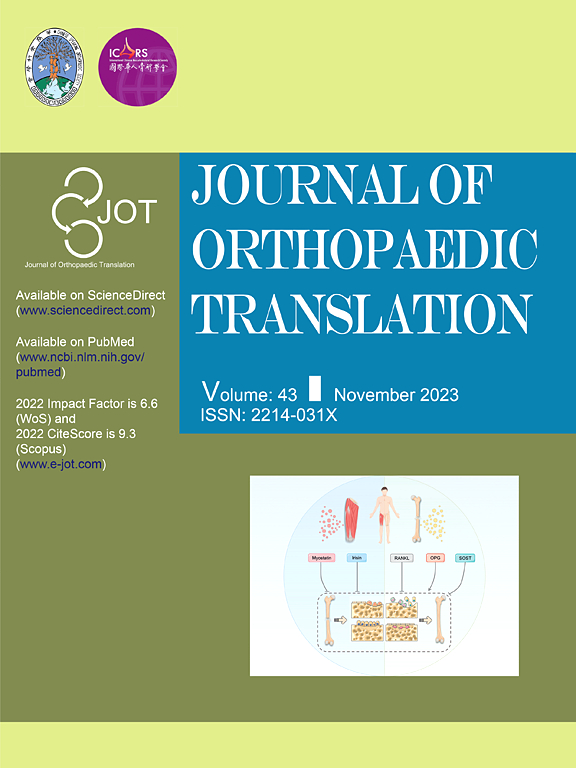Comparative efficacy of non-vascularized and vascularized bone grafts, with emerging insights into bone biomaterial grafts, in scaphoid fracture nonunion treatment: A systematic review and meta-analysis
IF 5.9
1区 医学
Q1 ORTHOPEDICS
引用次数: 0
Abstract
Background
Scaphoid fractures are prevalent wrist injuries with significant treatment challenges, especially when get complicated by nonunion and avascular necrosis. Various grafting techniques, including non-vascularized bone grafts (NVBGs), vascularized bone grafts (VBGs), and bone biomaterial grafts, are utilized to promote healing, but the comparative efficacy of these methods remains unclear.
Objective
This systematic review and meta-analysis aim to assess the efficacy of different types of bone grafts (NVBGs, VBGs, and bone biomaterials) in the treatment of scaphoid nonunion, focusing on outcomes including union rates, time to healing, and functional recovery scores.
Methods
A systematic search of PubMed, Scopus, Cochrane and Web of Science was conducted to identify eligible studies published between 2000 and 2024. studies were categorized into: (1) comparative studies of NVBG vs. VBG, (2) studies reporting only NVBG outcomes, and (3) studies reporting only VBG outcomes. Bone Biomaterials were assessed separately due to limited data (one study). Meta-analyses were performed on in common reported outcomes for each group including union rates, time to healing, range of motion, grip strength, and Modified Mayo Wrist Scores (MMWS).
Results
A total of 62 studies involving 2332 scaphoid nonunion patients were included. VBGs demonstrated significantly higher union rates and shorter healing times compared to NVBGs. VBG-treated patients also showed better functional outcomes, including greater grip strength and MMWS in comparative studies NVBGs were less effective in evaluated cases and required longer healing times. The use of bone biomaterial grafts, although limited in the current literature, showed promising results comparable to NVBGs, but further studies are needed.
Conclusion
VBGs demonstrated higher union rates and shorter healing times compared to NVBGs, with better functional outcomes in some cases, though evidence certainty is moderate. Bone biomaterials represent a promising alternative to traditional grafts but require more evidence to support their widespread use. Treatment decision-makers should consider clinical context and case-specific conditions. Further research is needed to confirm these trends.
Translational potential: This study helps clinical decision-making by evaluating the efficacies of different bone grafts outcomes in complex scaphoid nonunions, potentially reducing treatment failures. It also underscores the emerging role of bone biomaterial grafts as a less invasive alternative, paving the way for personalized orthopedic strategies needing further evaluations to be used for treating scaphoid nonunions.

非血管化和血管化骨移植物在舟骨骨折不愈合治疗中的比较疗效,以及骨生物材料移植物的新见解:一项系统回顾和荟萃分析
舟状骨骨折是一种常见的腕部损伤,具有显著的治疗挑战,特别是当合并骨不连和缺血性坏死时。各种移植技术,包括非血管化骨移植(NVBGs)、血管化骨移植(VBGs)和骨生物材料移植,被用于促进愈合,但这些方法的相对疗效尚不清楚。本系统综述和荟萃分析旨在评估不同类型骨移植物(NVBGs、VBGs和骨生物材料)治疗舟状骨不愈合的疗效,重点关注愈合率、愈合时间和功能恢复评分。方法系统检索PubMed、Scopus、Cochrane和Web of Science,筛选2000 - 2024年间发表的符合条件的研究。研究分为:(1)NVBG与VBG的比较研究,(2)仅报道NVBG结果的研究,以及(3)仅报道VBG结果的研究。由于数据有限(一项研究),骨生物材料被单独评估。对每组常见的报告结果进行荟萃分析,包括愈合率、愈合时间、活动范围、握力和改良梅奥手腕评分(MMWS)。结果共纳入62项研究,涉及舟骨不连患者2332例。与nvbg相比,VBGs具有更高的愈合率和更短的愈合时间。vbg治疗的患者也显示出更好的功能结果,包括在比较研究中更强的握力和MMWS, nvbg在评估病例中效果较差,需要更长的愈合时间。骨生物材料移植物的使用,虽然在目前的文献中有限,但显示出与nvbg相当的有希望的结果,但还需要进一步的研究。结论与nvbg相比,vbbg具有更高的愈合率和更短的愈合时间,在某些情况下具有更好的功能结局,尽管证据确定性中等。骨生物材料是传统移植物的一种很有前途的替代品,但需要更多的证据来支持其广泛应用。治疗决策者应考虑临床背景和病例具体情况。需要进一步的研究来证实这些趋势。转化潜力:本研究通过评估复杂舟状骨不连不同骨移植结果的疗效来帮助临床决策,潜在地减少治疗失败。这也强调了骨生物材料移植物作为一种侵入性较小的替代方法的新兴作用,为个性化矫形策略铺平了道路,需要进一步评估用于治疗舟状骨不连。
本文章由计算机程序翻译,如有差异,请以英文原文为准。
求助全文
约1分钟内获得全文
求助全文
来源期刊

Journal of Orthopaedic Translation
Medicine-Orthopedics and Sports Medicine
CiteScore
11.80
自引率
13.60%
发文量
91
审稿时长
29 days
期刊介绍:
The Journal of Orthopaedic Translation (JOT) is the official peer-reviewed, open access journal of the Chinese Speaking Orthopaedic Society (CSOS) and the International Chinese Musculoskeletal Research Society (ICMRS). It is published quarterly, in January, April, July and October, by Elsevier.
 求助内容:
求助内容: 应助结果提醒方式:
应助结果提醒方式:


